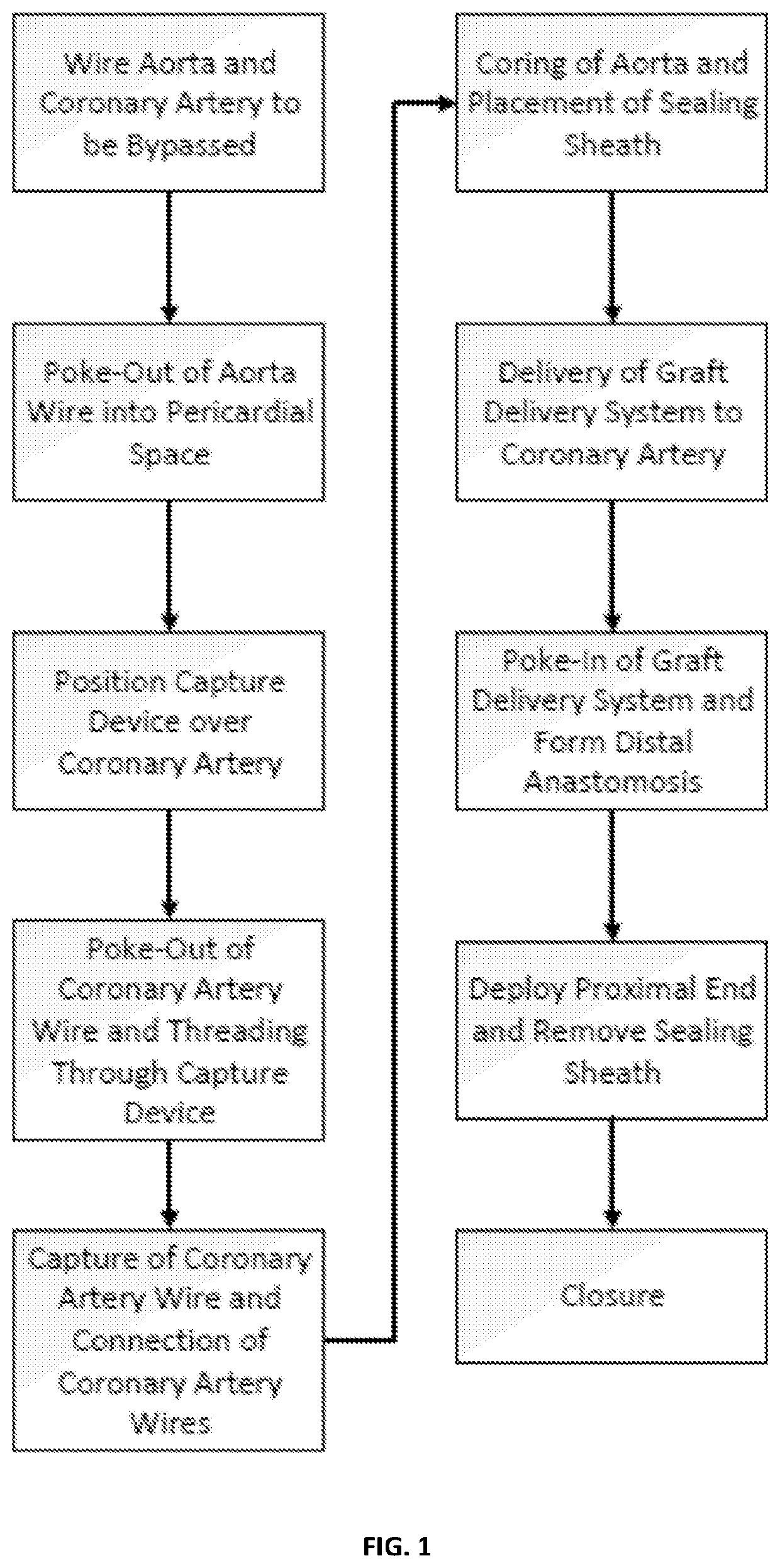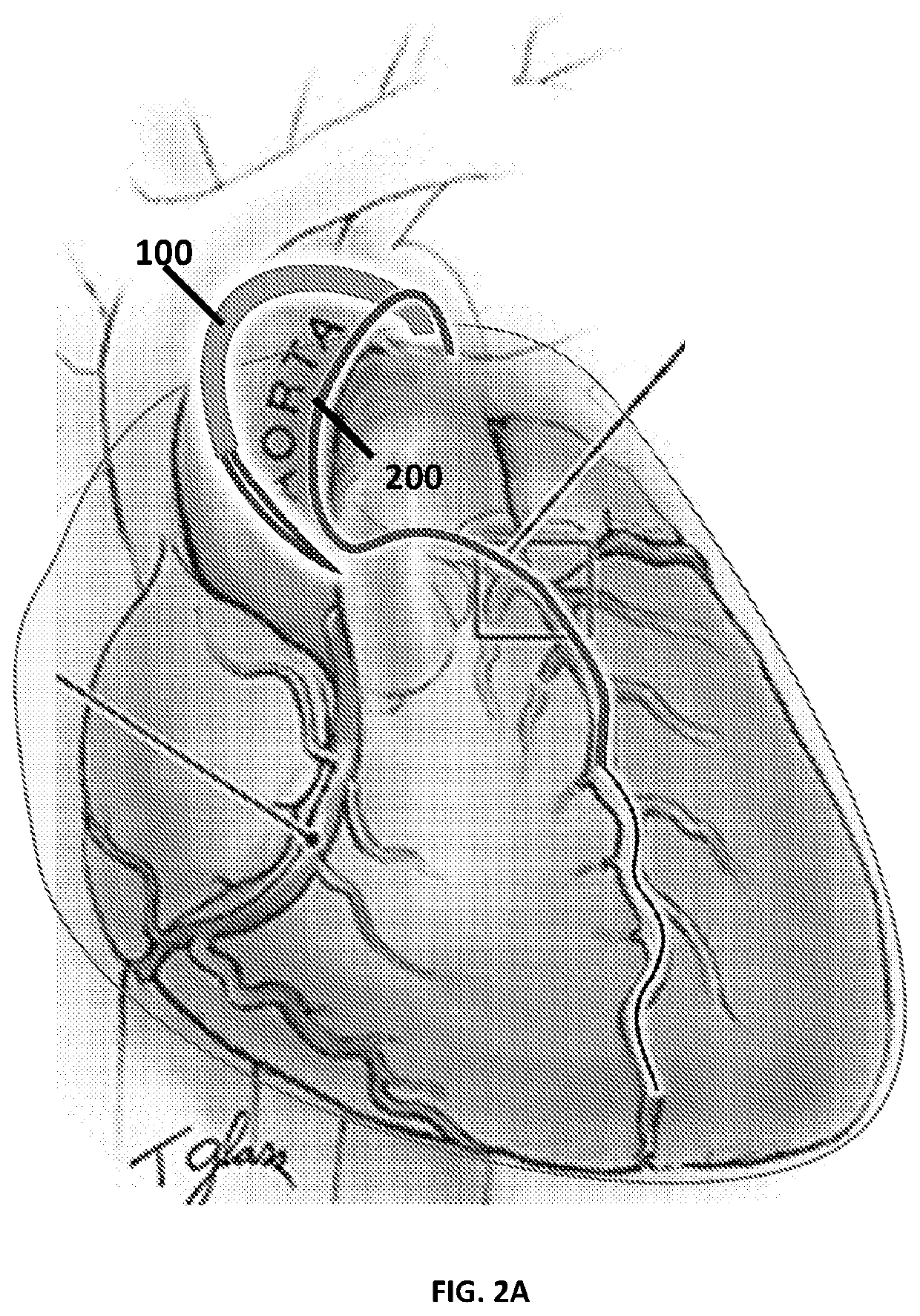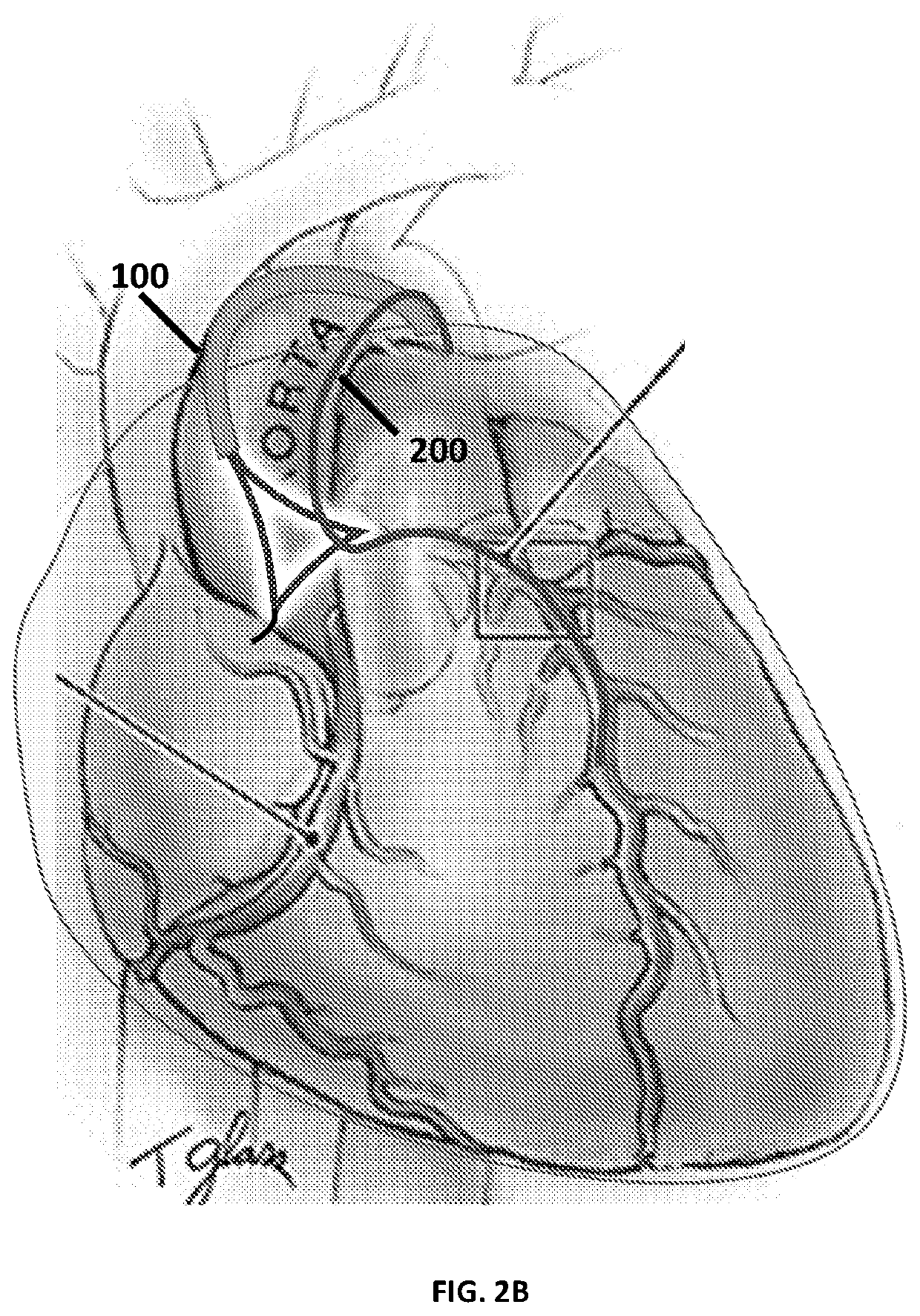Methods and devices for minimally invasive transcatheter coronary artery bypass grafting
a technology of coronary artery bypass and minimally invasive, applied in the field of medical devices and medical procedures, can solve the problems of obstructing or completely obstructing the coronary arteries, reducing the flow of oxygen-rich blood to the heart, angina (pain or discomfort in the chest), etc., and achieves the effect of reducing risk and reducing cos
- Summary
- Abstract
- Description
- Claims
- Application Information
AI Technical Summary
Benefits of technology
Problems solved by technology
Method used
Image
Examples
Embodiment Construction
[0021]The systems and methods of the present invention are generally directed to CABG procedures which utilize the pericardial cavity (i.e. the space between the inner surface of the parietal pericardium and the visceral pericardium which adheres to the surface of the heart) to pass a vascular graft, anastomosis elements and related components in an “over-the-wire” fashion, eliminating the need for open surgery. The procedure is shown schematically in FIG. 1 and its individual steps are illustrated in FIGS. 2A-I. The procedure begins, as shown in FIG. 2A, with the positioning of two devices: an aortic guidewire and / or catheter 100 (referred to interchangeably as an “aorta wire”) is placed within the aorta at a place where a vascular graft 1 will be joined at its proximal end 5, and a coronary artery catheter and / or guidewire 200 (referred to as a “coronary artery wire”), which is inserted into the coronary artery and positioned so that its distal tip is past an obstructed portion of...
PUM
| Property | Measurement | Unit |
|---|---|---|
| pressure | aaaaa | aaaaa |
| flexible | aaaaa | aaaaa |
| super elastic | aaaaa | aaaaa |
Abstract
Description
Claims
Application Information
 Login to View More
Login to View More - R&D
- Intellectual Property
- Life Sciences
- Materials
- Tech Scout
- Unparalleled Data Quality
- Higher Quality Content
- 60% Fewer Hallucinations
Browse by: Latest US Patents, China's latest patents, Technical Efficacy Thesaurus, Application Domain, Technology Topic, Popular Technical Reports.
© 2025 PatSnap. All rights reserved.Legal|Privacy policy|Modern Slavery Act Transparency Statement|Sitemap|About US| Contact US: help@patsnap.com



